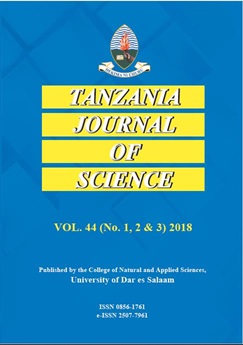Chemical Analysis, Antibacterial Activities and Uses of Leaves and Calyces of Hibiscus sabdariffa Grown in Dodoma, Tanzania
DOI:
https://doi.org/10.4314/tjs.v48i4.6Abstract
Preliminary phytochemical screening of aqueous and ethanolic extracts of Hibiscus sabdariffa grown in Tanzania revealed the presence of secondary metabolites like steroids, tannins, saponins, glycosides, terpenoids, flavonoids along with L-ascorbic acid (vitamin C) and iron(II). Furthermore, both leaves and calyces showed antibacterial activities (agar well diffusion method) against selected bacterial species (Escherichia coli, Staphylococcus aureus, Salmonella typhi and Shigella sonnei), but calyces possessed potent antibacterial activities compared to leaves. The results also supported the claimed traditional uses of this plant. When interrogated during the cross-sectional study in Dodoma region, 54% of the respondents claimed the plant is used to treat anaemia (supposedly as it increases haemoglobin levels), 23% claimed it is used in the preparation of local wine and the remaining respondents stated use in both areas. Furthermore, the intake of H. sabdariffa leaves and calyces on regular basis can boost the immunity system and helps in preventing bacterial and viral infections as the plant is loaded with flavonoids and vitamin C. Thus, the results observed for the plant H. sabdariffa that is grown in Dodoma in small scale for traditional uses, paves a way for consideration of future large scale production of pharmaceutical and neutraceutical products in Tanzania.
Keywords: Phytochemical screening, Hibiscus sabdariffa, antibacterial activity, L-ascorbic acid and iron(II)


